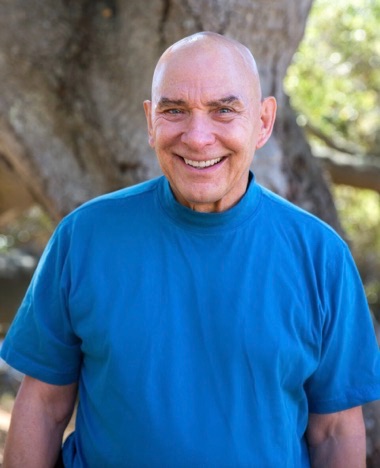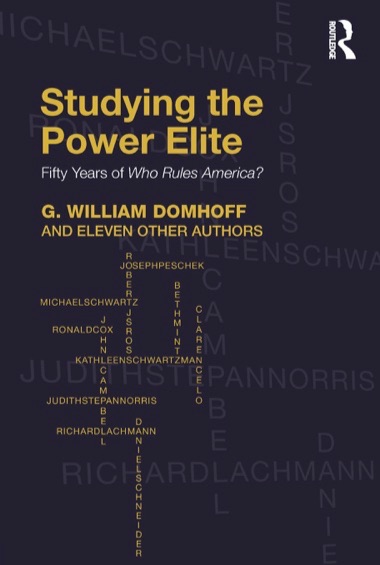Fifty years ago, G. William Domhoff published Who Rules America?, a slim volume that chronicled the role of corporations and the "power elite" in the United States.
Now in its seventh edition, Who Rules America? has never been out of print. This year, in recognition of the 50th anniversary, Domhoff and eleven coauthors have published a new book, Studying the Power Elite: Fifty Years of Who Rules America.
Studying the Power Elite presents a new, detailed analysis of the interplay of corporate elites on contemporary topics, including the privatization of public schools, foreign policy, agribusiness, and banking reform.
"The levers of influence are the same as they've been since the 1930s," said Domhoff, a distinguished professor emeritus and research professor at the University of California, Santa Cruz. "Exclusive, corporate-supported policy-planning networks made up of wealthy business interests and the experts they hire exert influence through a well-defined process. People are informally selected, groomed, educated and vetted by these elite networks, and then they cycle in and out of government, wielding influence in ways that benefit their networks."
In the new volume, each coauthor builds on Domhoff's signature contributions, revealing how the corporate rich triumphs repeatedly over organized labor, liberals, and environmentalists.
The privatization of K-12 schools has followed the path of corporate influence, culminating in the appointment of Betsy DeVos as secretary of education. Contributor Beth Mintz, professor of sociology at the University of Vermont, describes the success of the "corporate reform movement," which has established charter schools, vouchers, tax credits, testing, school closings, and teacher termination as the vocabulary of privatization.
Corporate influence is apparent throughout agribusiness, too. In a chapter on the poultry industry entitled "Who Rules the Roost?," contributor Kathleen Schwartzman, professor of sociology at the University of Arizona, details producers' focus on working conditions, environmental impacts, consumer protections, and animal rights.
In the first chapter, Domhoff explains the origins and evolution of his thinking over the seven editions of Who Rules America? For decades, he has combined the tenacity of an investigative journalist with the careful use of social-science methods, such as network analysis and content analysis. Today, he delights in gaining internet access to obscure records that are buried deep in personal and corporate archives in research libraries across the country. He calls his recent work "a do-over" using historical methods to see how much he got right earlier in his career.
The other contributors, invited by the publisher to extend or critique Domhoff's work, bring a range of perspectives to Studying the Power Elite. In a chapter on corporate interests and U.S. foreign policy, author Ronald Cox, professor of politics and international relations at Florida International University, writes of the "embedded relationship between the upper class, corporations, and the U.S. state, including the dominant class coalitions within the Democratic and Republican parties."
But Cox asserts that Domhoff's theory of policy-planning networks needs to be supplemented to emphasize that divisions among U.S. business interests can lead to conflicts over policy. In the case of NAFTA, for example, the high-tech sector's interests were different from U.S.-based automobile companies. Similarly, U.S. business interests are split over whether China should be viewed as a U.S. ally or a strategic enemy.
John Campbell, professor of sociology at Dartmouth College, takes the most critical stance. He writes in Chapter Four about being inspired by Who Rules America? to major in sociology in 1967, and says its themes are as relevant now as they were 50 years ago "given the rise of a new gilded age in America, growing concern over wealth and income inequality, and the overwhelming presence of corporate executives… in the highest echelons of the Trump Administration."
Campbell goes on to call for greater recognition of the increasing role of state policy research organizations and a reassessment of the influence of think tanks and policy-planning networks themselves. Domhoff, who would welcome such a reassessment, suspects it would further reinforce the role of the policy-planning network in creating new government agencies.
For Domhoff, 81, such critiques represent a call to action. Fifty years after Who Rules America? appeared on bookshelves, he shows no sign of slowing down. He is currently hard at work on a new book that reexamines power in America in the twentieth century, based on the historical record.




